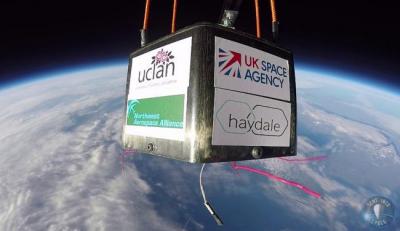Researchers at the University of Central Lancashire (UCLan) are exploring the practical applications of graphene in the space industry. In a recent experiment, they launched specially-designed graphene-enhanced carbon fiber material into near space using high altitude balloons.

By comparing a graphene-enhanced carbon fiber to a standard carbon fiber casing, the researchers will be able to test how both react to extreme conditions in space. They will then compare the results to determine how graphene can be utilized for aerospace applications.
To ensure accurate results, sensors were attached to each casing to monitor and record key data, including how they react to temperatures of up to minus 60 degrees, and the effects of very low pressure.
Professor Robert Walsh, Professor of Astrophysics at UCLan, added: Our mission was very successful, both casings were recovered and we are now in the process of analyzing the flight data to explore how graphene could play a key role in the future of space exploration.
The programme is led by UCLan, who have a campus in Princess Way, Burnley and part-funded by the UK Space Agency’s National Space Technology Programme. The graphene-enhanced materials have been produced by industrial partners Haydale Composite Solutions, while the high-altitude balloons used for the launch were provided by Sent Into Space.
To ensure accurate results, sensors will be attached to each casing to monitor and record key data, including how they react to temperatures of up to minus 60 degrees, and the effects of very low pressure. This launch will provide researchers with the raw data that will enable them to take the next critical steps in their research.
UCLan has been exploring applications of graphene in the aerospace industry for years; This experiment follows such work as developing a new graphene-coated aeroplane, a graphene-enhanced UAV (unmanned aerial vehicle) and more.